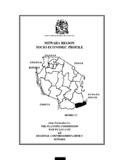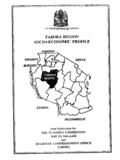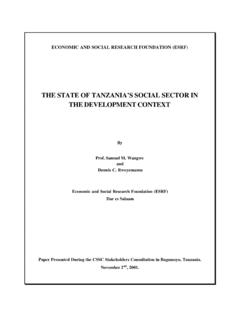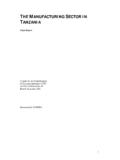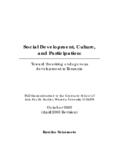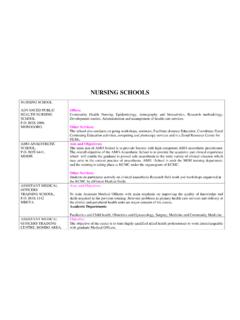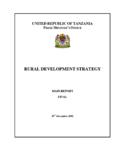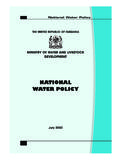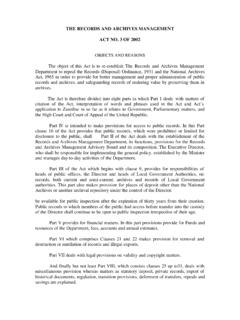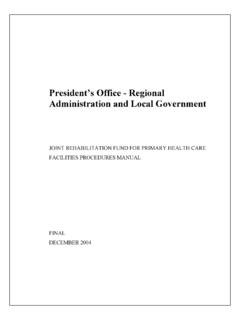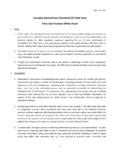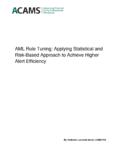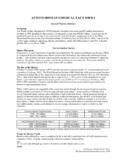Transcription of TANGA REGION SOCIO-ECONOMIC PROFILE - …
1 KENYAUGANDARWANDABURUNDIZAMBIAMSUMBIJI12 3451234512345123451234512345123451234512 3451234561234561234561234561234561231231 23123123123 TANGA12121212121212121212121112121212111 231231231212 THE UNITED REPUBLIC OF TANZANIATANGA REGIONSOCIO-ECONOMIC PROFILEJ oint Publication by:THE PLANNING COMMISSIONDAR ES SALAAMandREGIONAL COMMISSIONER'S OFFICETANGA iTABLE OF CONTENTS Page SECTION LAND, POPULATION AND AREA AND ADMINISTRATIVE ETHNIC POPULATION SIZE AND POPULATION DENSITY AND AGRO - ECONOMIC TOPOGRAPHY AND DRAINAGE DRAINAGE SECTION THE REGIONAL GDP AND PER CAPITA FOOD CASH FARM LIVESTOCK LIVESTOCK NATURAL RESOURCES AND I) (V) MINERALS SECTION ECONOMIC ROAD AIR SECTION SOCIAL PRIMARY DROP-OUT SECONDARY HEALTH DISPENSARIES.
2 132 HEALTH LIFE INFANT AND UNDER FIVE MORTALITY MARTENAL WATER ENVIRONMENTAL iiiSECTION DEVELOPMENT POTENTIALS AND AGRICULTURE:..160 Food Crops:..160 Cash Crops:..163 c) Other Natural Resources:..165 ii) iii) d) Industrial A ctivities (Agro-Industries)..167 e) Tourism:..168 f) Mining:..169 g) Education:..169 h) Health:..170 i) Water:..170 GENERAL INFORMATION ABOUT AREA OF TANZANIA MAINLAND AREA BY regions (SQ KM)..171 TOTAL POPULATION AND LIFE EXPECTANCY FOR TANZANIA - BY regions , 1967, 1978, 1988, 1996:..172 LAND ARABLE LAND:..173 MOUNTAIN SUMMITS (METRES ABOVE SEA LEVEL)..173 (A) SOCIAL HEALTH EDUCATION: ENROLMENT RATES 1990 COMPARED WITH OTHER EAST AFRICA NATIONAL vFOREWORD 1.
3 As we approach the 21st Century the problems facing rural areas in developing countries like Tanzania are numerous and formidable. Social and Economic services are deteriorating and proving to be unsustainable; school enrollment rates are declining; food situation is precarious; infant and maternal mortality rates continue to be high; unemployment is on the rise triggering off mass migration of youth from the rural areas into already overcrowded urban centres; in TANGA REGION , for example, land pressure is escalating and deforestation is going on at an alarming rate. 2. This situation has arisen because of many factors including ill - prepared rural development programmes and weak monitoring and supervision of the implementation of development programmes and sectoral strategies.
4 The observed shortcomings in the policy formulation, project identification, design, and implementation in the developing countries is in turn attributed to lack of reliable and adequate data and information on the rural development process. 3. The publication of Regional SOCIO-ECONOMIC Profiles series by the Planning Commission in collaboration with Regional Commissioner's offices should be viewed as a fruitful attempt towards finding solutions to the existing problem of data and information gap. 4. The Regional PROFILE series cover a wide range of data and information on geography, population, social economic parameters, social services, economic infrastructure and viproductive sectors.
5 The publications so far have proved to be of high demand and a vital source of information to many policy makers, planners, researchers, donors and functional managers. The Planning Commission has found it a worthwhile effort to extend the exercise to cover even more regions . Readers are invited to make suggestions and constructive criticisms which can assist in improving the quality and effectiveness of future Profiles. 5. I would like to take this opportunity to acknowledge with thanks once again the financial support of the Royal Norwegian Embassy which facilitated the preparation of the TANGA REGION SOCIO-ECONOMIC PROFILE .
6 I would also like to thank both the Planning Commission and TANGA Regional Planning Staff who put a lot of effort into ensuring the successful completion of this task. Nassoro Malocho (MP) MINISTER OF STATE PLANNING April, 1997. 1 SECTION I LAND, POPULATION AND CLIMATE Location TANGA REGION is situated at the extreme north-east corner of Tanzania between 4o and 60 degrees below the Equator and 370-39010'degrees. east of the Greenwich meridian. The REGION occupies an area of 27,348 sq kms, being only 3% of total area of the country. TANGA shares borders with Kenya to the north, Morogoro and Coast regions to the south, Kilimanjaro and coast regions to the south, and Kilimanjaro and Arusha regions to the west.
7 To the east it is boded by the Indian ocean. Mligaji River also forms a large part of the border in the South. AREA AND ADMINISTRATIVE UNITS Administratively, the REGION is divided into 6 districts namely, Lushoto, Korogwe, Muheza, Handeni, Pangani and TANGA Municipality. The REGION has as well 37 divisions, 136 Wards and 557 villages. The Regional Administrative Secretary is the Chief Executive in the REGION assisted by District Executive Directors at district levels and other functional officers, while 2the Regional Commissioner is the administrative overseer and represents the President in the REGION .
8 The REGION has a land area of 27,348 Sq. Kms. of which 48 percent belongs to Handeni district and 5 percent belongs to Pangani district, 13 percent to Lushoto, 14 percent to Korogwe and 18 percent of the land area to Muheza. The total area available for agricultural activities is 17,000 sq. kms. With a population of 1,280,262 people, TANGA REGION is among the smallest and most densely populated regions of Tanzania (about people per sq. kms.), after Mtwara, Kilimanjaro and Mwanza regions . Fig. 1: Administrative Area of Land in TANGA REGION by District in Sq. Km TANGA Municipal2%Muheza18% 3 Table I: LAND AREA AND ADMINISTRATIVE UNITS OF TANGA REGION District or Municipality Area Divisions Wards Villages TANGA Municipal 536 4 21 23 Muheza 4,922 6 27 140 Korogwe 3,756 4 20 132 Lushoto 3,500 8 32 137 Handeni 13,209 13 23 102 Pangani 1,425 4 13 23 27,348 37 136 557 Source: Regional Commissioner's Office - TANGA .
9 ETHNIC COMPOSITION In terms of ethnic composition, Lushoto and Handeni have the most homogenous population while Muheza, Korogwe, TANGA and Pangani feature a very heterogenous tribal composition where no single ethnic group accounts for more than 20% of the total district population. 4 The main ethnic groups in terms of their numbers are Sambaa, Zigua, Bondei and Digo. Sambaa are the main ethnic group in the Usambara Mountains and low lands of Muheza, in Korogwe and Lushoto they account for nearly 40% of the REGION s total population. The Zigua are the main ethnic group in Handeni district and partially Korogwe and Pangani districts, while Bondei are mainly in Muheza district and part of Pangani.
10 Digo are the main ethnic group in TANGA district and part of Muheza district. Both Bondei and Digo depend on livestock keeping and fishing along the coast. There are other small ethnic groups such as Segeju, Duruma, Mbugu and Pare. Asians and Europeans mostly occupying the urban centres in the REGION , account for a very small population. The 1978 census showed the composition of ethnic groups by district as follows: Handeni District - Zigua , Nguu , Others Korogwe District - Sambaa , Zigua , Others Lushoto District - Sambaa , Pare , Others Muheza District - Bondei , Sambaa , Digo , Zigua , Segeju , Makonde , Others 5 Pangani District - Zigua , Makonde , Yao , Others TANGA District - Digo , Sambaa , Bondei , Zigua , Segeju , Others POPULATION SIZE AND GROWTH The population of TANGA REGION has been increasing since 1957 and more than doubled in 1988.
